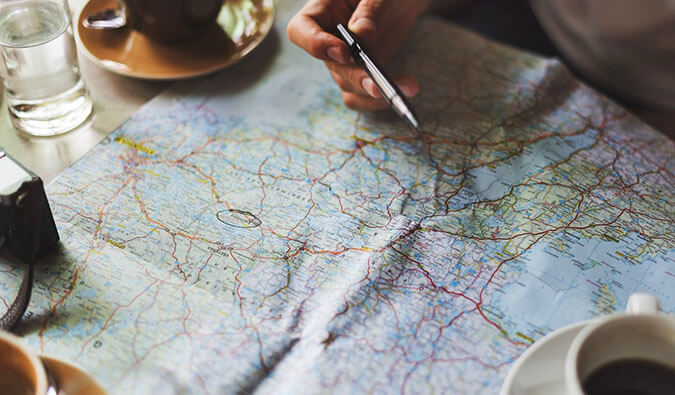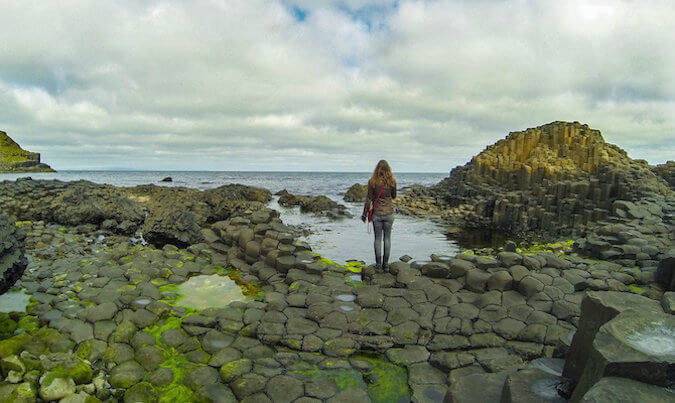Last Updated: 7/31/2023 | July 31st, 2023
“Where should I go?” is a question I frequently ask myself.
A couple of years ago, wanting to escape the oppressive summer heat of Austin, I spent months staring at a map and unable to answer that question.
I toyed with the idea of heading to Madagascar, Hawaii, Malta, the Caribbean, the Maldives, Dubai, and Sri Lanka.
I couldn’t choose and was so afraid to commit that I didn’t decide until two weeks before my trip where I wanted to go (which made planning a last-minute pain).
Psychologists call this “choice overload” or “analysis paralysis.”
Humans only have a limited amount of decision-making power each day. It’s why people like routines. It makes life easier. Choice overload occurs when we have too many choices available to us. We get decision fatigue and go with the default option thus avoiding making a decision altogether. We are sometimes so paralyzed by the fear of making the wrong choice that they don’t make any choice.
Think of standing in the cereal aisle. We have all these options right in front of us, but we keep going back to our old favorite, Fruity Pebbles. (Or, Cinnamon Toast Crunch if we’re feeling adventurous!)
We may want to try something new, but we can’t figure out what we want the most — there are just too many options! How do we choose? How do we know we won’t make the wrong choice? So, paralyzed with indecision, we go back to what we know. And, if we don’t have a favorite, often we just choose what is popular and familiar.
Contemplating our options can become such a taxing mental burden that we don’t make a decision. That’s why our minds want shortcuts. It’s how we process all the information thrown at us each day. It’s too difficult to think about every simple decision all the time. Going with what you know and is familiar is how we shortcut our analysis paralysis.
(This is all explained in the 2004 book The Paradox of Choice, which I highly recommend reading.)
Think of the world as the proverbial cereal aisle. We’re looking forward to picking a cereal (a destination), but suddenly realize we have too many options. Faced with so many choices and without a strong opinion (e.g., I really want to go to Thailand this fall!), we stare blankly, wondering if picking a destination is the right choice, so we end up (a) fretting about it for months like I did, missing flight deals and precious planning time or (b) end up with what is big, popular, and familiar (let’s just visit Paris for the tenth time!).
Whether we have two weeks, two months, or two years, deciding where to go is the hardest part of travel. Once you have the time, picking the destination becomes a task of whittling down a long list of “must-see” destinations.
I often get so paralyzed by choice that I don’t book a trip until the last minute, and even then, I often suffer from buyer’s remorse. Did I really want to book that flight to Dubai? Or should I have gone to Madagascar instead? If I do this trip, will I have time to visit Peru later this year, or should I just go to Peru now?
Of course, when I get to where I’m going, all of that second-guessing melts away and I have the time of my life.
If you’re a long-term traveler, you can go anywhere for as long as you want. But when you only have a limited amount of time — because you’re like me and slowing down, or because you just have a few weeks off from work and need to make the most of them — you have to be more selective.
So how do you narrow down your destinations, get on with your trip planning, and not suffer the anxiety that comes with choice overload?
First, embrace variety. You’re always going to be overwhelmed by choice. There will always be more destinations to visit than you have time to see. The list of places to visit will only get longer the more you travel, not shorter. Don’t fight it. Recognize it and don’t let it control you. This is just a fact of life.
Second, start with a list of the ten places you want to visit the most. Come up with the destinations that are at the top of your mind. Since I haven’t been able to travel for a year, I’m planning to visit some new destinations (like Oman and the Balkans) while also visiting some favorites like Greece.
Third, figure out when you can go and how long you have. Because some destinations will require more time. And, since it’s better to do less not more when you travel, how long you have will affect the destination you pick.
Fourth, think of the time of year. Which country has the weather you want to enjoy the most? I’m trying to escape the heat of Austin this summer, which is why I’m going on a road trip so I can beat the heat and not sweat to death in Texas. If you’re traveling in the winter, chances are you want to skip the cold and head somewhere sunny.
Fifth, make the length of your travels proportional to the size of the country. If I only have a couple of weeks, I’ll likely skip large countries like India, Brazil, or China and save them for when I’m planning a longer trip. If I just have a couple of weeks, I’ll focus on smaller destinations that I can explore more in-depth during a shorter period of time.
Finally, find the cheap flights. Out of your list of destinations, where are the cheapest flights? For example, on a trip a few years ago when I was going to Dubai, it was $1,700 USD add on Madagascar but only $400 to go to the Maldives. But, thanks to airline miles, it was $0 to get to and from Sri Lanka. That made the choice easy.
Once I stopped letting too much choice keep me from making a decision and after logically going through my checklist, I stopped hemming and hawing about where I wanted to go, found my destinations, booked my trip, and got on with getting excited about visiting new places.
Do the same. Start with your list and refine it using the above criteria until you narrow the selection down to the place(s) that makes the most sense to visit right now. The other destinations will be there for future trips!
Overcoming choice overload in travel is about first realizing that there will always be more places to visit than you have time, then figuring out what destinations fit what you can do right now. Once you start with your list of destinations, getting down to the perfect one becomes a process of elimination.
There will always be too many destinations to choose from and too little time to see them in.
But, at the very least, we can finally break our analysis paralysis.
Book Your Trip: Logistical Tips and Tricks
Book Your Flight
Find a cheap flight by using Skyscanner. It’s my favorite search engine because it searches websites and airlines around the globe so you always know no stone is being left unturned.
Book Your Accommodation
You can book your hostel with Hostelworld. If you want to stay somewhere other than a hostel, use Booking.com as it consistently returns the cheapest rates for guesthouses and hotels.
Don’t Forget Travel Insurance
Travel insurance will protect you against illness, injury, theft, and cancellations. It’s comprehensive protection in case anything goes wrong. I never go on a trip without it as I’ve had to use it many times in the past. My favorite companies that offer the best service and value are:
- SafetyWing (best for everyone)
- Insure My Trip (for those 70 and over)
- Medjet (for additional evacuation coverage)
Want to Travel for Free?
Travel credit cards allow you to earn points that can be redeemed for free flights and accommodation — all without any extra spending. Check out my guide to picking the right card and my current favorites to get started and see the latest best deals.
Need Help Finding Activities for Your Trip?
Get Your Guide is a huge online marketplace where you can find cool walking tours, fun excursions, skip-the-line tickets, private guides, and more.
Ready to Book Your Trip?
Check out my resource page for the best companies to use when you travel. I list all the ones I use when I travel. They are the best in class and you can’t go wrong using them on your trip.


